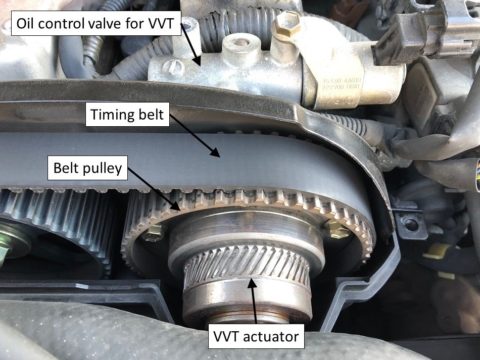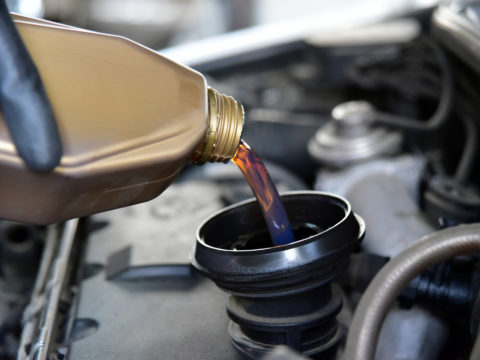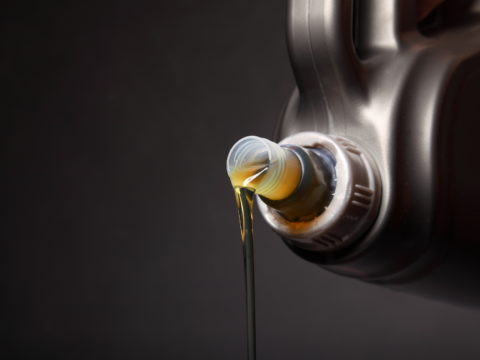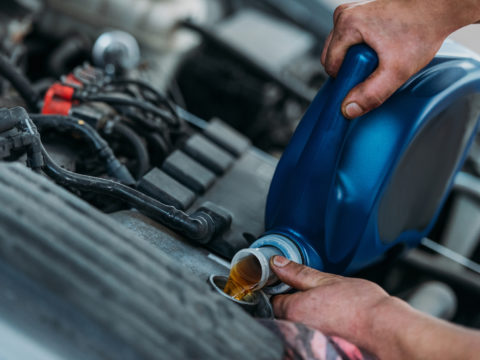Think of oil as the lifeblood of an engine–no internal combustion engine can survive without it. Correct oil pressure within the engine ensures optimal driving performance. Oil pressure can vary in different states, whether idling or in drive, whether the engine is cold or hot. So what about when the engine is idling?
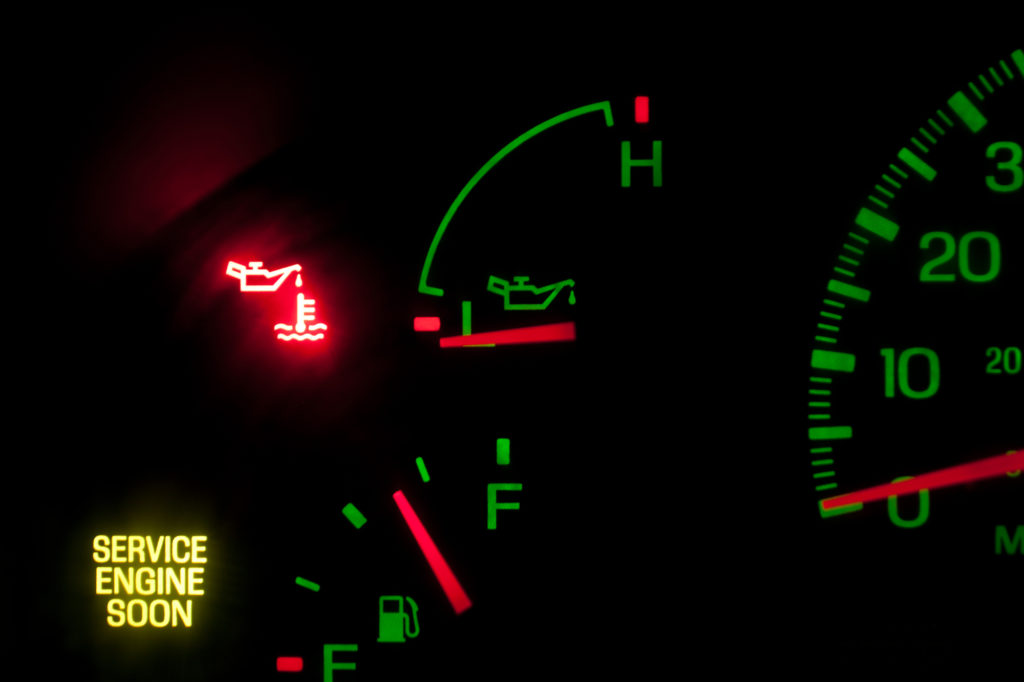
Contents
What is Considered Normal Oil Pressure at Idle?
When the pressure is too low or too high, it can cause several issues within the engine itself, necessitating costly repairs, or permanently damaging the engine. Let’s take a look at oil pressure.
Normal oil pressure range:
Car: 25-65 PSI, 20-30 PSI at idle
Truck: 30-70 PSI, 25-35 at idle
While these pressure measurements are within the typical range, each vehicle is different. Check the owner’s manual to verify that oil pressure readings are within a normal range.
On the other hand, oil pressure above 80 PSI is too high. Oil pressure must stay within a range to keep the engine running as efficiently as possible. Some parts and mechanisms ensure this, and any oil pressure reading that is above or below the normal range can indicate a problem.
What is Too Low at Idle?
Anything below 20 PSI is considered too low. If there is insufficient oil pressure within the engine, there is not enough oil to lubricate the moving parts within the engine. When the parts of the engine cannot move freely, the heat from friction can cause damage to the engine.
There are sensors within the car’s engine that are designed to specifically monitor the oil pressure within the engine.
These can be actual gauges on the instrument cluster that indicate oil pressure levels, or in newer vehicles, this can be a sensor that triggers an oil light on the dashboard. Some newer vehicles with dashboard displays on the vehicle systems can offer a little insight into the functionality of the oil pressure in the engine.
What Does Low Pressure at Idle Mean?
Low pressure at idle, or when the engine is not engaged and the vehicle is not moving, can mean several things. The least worrisome reason is that there may be a problem with the oil pressure sensor within the engine. This can be easily solved by having a technician replace the faulty sensor.
Other reasons that the oil light may come on are things that require more immediate attention. Low oil pressure can be indicative of low oil level, which can be caused by a slow leak, indicating there may be damage somewhere within the engine, a defective oil pump, a blocked oil filter, or an improper oil weight.
How to Check Oil Pressure
Though taking your car to a mechanic is the easiest way to diagnose a problem with low oil pressure, it can sometimes be costly. However, there is a relatively inexpensive, do-it-yourself option if you’re the type of person to get dirty under the hood.
There are oil pressure test kits available at any auto parts store, as well as online at any retailer that carries auto parts. Prices range from $28 to $183, depending upon the type you buy. The more expensive the kit, the more likely you are to be a mechanic who needs to use one regularly, of course.
Here is a helpful video that demonstrates how to check the oil pressure for those of you who may need a visual of how it works.
Checking the oil pressure with a kit entails hooking up the pressure gauge to the oil sump–at the point where the oil pressure sensor connects– and getting a reading as the engine is at a certain RPM, as well as at idle.
This usually entails the help of another person if you plan to get several readings at different RPMs. After you get the oil pressure test kit, it’s time to gather some tools and get to measuring.
- Be sure to work safely under the hood of your vehicle. Chock the wheels and set the handbrake.
- Locate the oil sump on the engine block. If you are unsure of where it is, check the owner’s manual.
- Place a pan under the oil sump to catch oil drips and spills.
- The sensor, or the oil pressure sender, is usually located on the side of the oil sump. Remove with the properly-sized tool. This usually needs to only be loosened then can be removed the rest of the way by hand.
- When the sender is removed, affix the oil pressure test kit. Follow the instructions that come with the testing kit. Some have multiple-sized attachments, so you may need to do some measuring to get the correct size.
- After the test kit is secured, start the engine and shift to neutral or park, then let it idle for 5 minutes to ensure that the engine warms up properly. Remember that the oil pressure can change due to temperature.
- After five minutes and the engine is properly warmed, check the readings on the pressure kit. Track what the PSI readings are at idle, and at other RPMs as indicated in the test kit. As mentioned before, a normal oil pressure PSI at idle is between 20-30 PSI.
- After you get the readings, turn off the engine and let it cool. Don’t try to work on a hot engine. When it is sufficiently cooled, remove the oil pressure test kit and reattach the sender.
Low Oil Pressure Symptoms
- Oil warning light
- Low oil levels
- Poor engine performance
- Engine noise
- Engine overheating
- Burning oil smell
Low Pressure at Idle Causes
- Drop in fuel economy
- Loss of power
- Engine damage (crankshaft, cylinder walls)
- Seized engine, usually irreparable and permanent
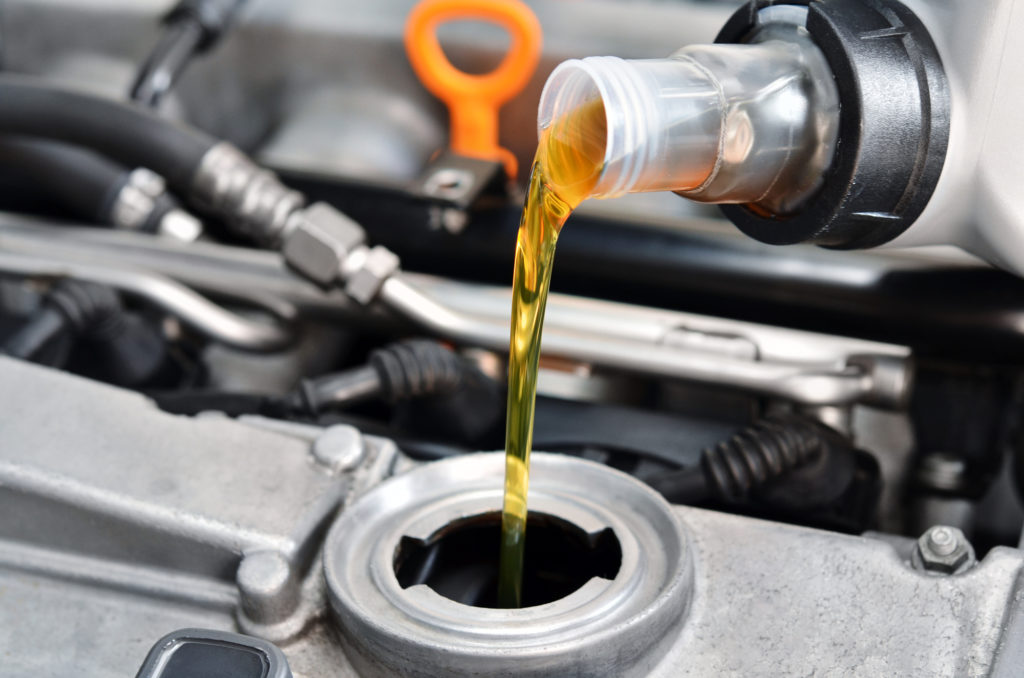
How to Fix Low Oil Pressure at Idle
There are several reasons for low oil pressure: a bad pressure sensor, a failing oil pump, blockage within the oil filter; luckily these issues can be addressed before major or irreparable damage is done to the engine.
First, check the sensor to be sure that it is working properly. Here is a guide to help you test the sensor. If it is faulty, this is an easy fix. Most auto part retailers will have this sensor, and it is relatively inexpensive to replace.
Another fix for low oil pressure can be as simple as adding more oil to the engine. Check oil levels with the dipstick. If it’s low, add more oil, but be sure to add the manufacturer’s recommended oil type.
As mentioned before, if the viscosity of the oil is incorrect, it doesn’t lubricate the engine properly. For example, switching from a 5W-20 oil to a 10W-30 can help resolve pressure issues. If the oil currently in the engine is the wrong type, it will need to be changed out.
If you find there is a leak within the engine, fix the leak so you aren’t having to constantly add oil.
There can also be an engine problem, such as needing to repair the bearings or another part. If you are unsure of the issue or don’t know how to fix it, take your car to a mechanic to have it checked out.
If there is a blockage within the oil filter, it may be time to clean it or replace it all.
If these other fixes are not resolving the issue, it may be time to replace the oil pump. As with any engine with moving parts, things wear out over time. Again, this may be one of those times you take your car to a mechanic to resolve the issue if you aren’t familiar with how to make such a repair.
Can You Drive a Car with Low Oil Pressure at Idle?
No! And please do not ignore that warning light on your dashboard! Driving a car with low oil pressure at idle can be costly.
While it may be easy to ignore the light on the instrument cluster, or put a sticker or a bandage over it, ignoring the issue can cause damage to the engine, and even make the engine irreparable. In most instances when the engine has seized, the only option is to completely replace the engine.
To tell the difference between a seized engine and a battery issue, check that the lights are coming on when you turn the key in the ignition.
If the lights turn on and there is a clunking sound or knocking and the engine will not turn over, it may have seized. If the lights do not come and there is a clicking noise and the engine will not turn over, it may be a battery issue. There are also signs that the engine may seize soon if noises come from the engine as it is running.
Keeping a close eye on the dash gauges and indicators can help you monitor the health of your vehicle. Any problems that arise while you are driving need to be addressed to avoid bigger and more costly problems. If you take proper care of your engine, it can run for many years.

